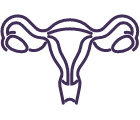Your well-being is about more than just survival
October is the international breast cancer awareness month. As anyone who goes online today probably knows, this illness affects 1 of 8 women worldwide. You can find hundreds of accounts of brave woman who share their personal story. As part of the treatment, many of these women undergo a mastectomy procedure. A mastectomy involves the full or partial removal of either one or both breasts. One cannot stress enough, how the feel and appearance of body parts which are closely tied with femininity crucially affects a woman’s well-being. And its not only appearance but comfort and a sense of wholeness that goes with it.
What is breast reconstruction after mastectomy? It is a procedure that restores the normal appearance of the breast after surgery or trauma. It can be one using a variety of techniques. One and most innovative of them is Auto-logos fat grafting (AFG). AFG is a technique that involves harvesting the patient’s own fat, from available deposits on various parts of the body, and implanting this fat tissue (or adipose tissue) to the breast.
Plastic surgeons use AFG for aesthetic purposes, such as augmentation, correction of breast asymmetry, correction of breast deformities, and for soft tissue coverage of breast implants. For women who have dealt with and survived breast cancer, the concern goes way beyond aesthetics.

Who can benefit most from this procedure?
Many women, even the younger ones, who have undergone cancer treatments, whether radiation or chemo therapy, often find themselves dealing with menopausal symptoms. These symptoms can be vaginal dryness, pain during intercourse and more. So, they deal with a whole set of consequences that affect their livelihood and intimate relationships.
Modern science and medicine not only acknowledge but also act upon a holistic approach. This approach states that feeling comfortable and content is a key factor for improved health. Our industry, along with top researchers have developed an abundance of techniques and treatments with the sole consideration of restoring confidence and well-being to patients. Fortunately, women who had to undergo full or partial mastectomy to one or both breasts have a variety of options to choose from.
Some plastic surgeons still opt to use implants as means for breast reconstruction. However, that is changing, and nowadays many surgeons are using more natural approaches to perform breast reconstruction after mastectomy. One of the more exciting approaches is using fat grafting, or fat transfer instead of artificial implants.
Autologous fat tissue has become a popular filling material, for the face, hands, buttocks and also breasts. That is largely due to it helps avoid complications associated with allogenic fillers and implants. It also has high and simple accessibility and is highly cost-effective!
How is this procedure done?
Advanced energy-based devices such as the Alma LipoLife platform are very handy for these physicians. That is because It allows the retrieval of exceptionally vital fat from the patients’ own body. Most woman, even ones who aren’t overweight have plenty of fat deposits to spare. Most are very happy to get rid of them. Hence in many cases this procedure has more than one (or Two) benefits as a whole-body contouring makeover can be obtained, not only the breasts’ reconstruction.
The vital and healthy fat is easily injected by the surgeon in the same session after the laser assisted liposuction. The surgeon can comfortably mold into the desired shape. In some instances, the surgeon will safely store some of the fat for later use as there is a limit to the amount of fat that can be injected in one session. So, for those aiming for a larger cup size another session of injection will follow later on. The surgeon can also use the fat for other aesthetic applications such as volume filling in your face, buttocks etc.

Why is the fat vitality rate so important?
Many surgical devices companies boast high rates of harvested fat vitality rate. However, only Alma’s LipoLife system has shown an astounding 95% rate. The system utilizes a specially designed 1470nm laser fiber that helps break the fat. A sophisticated filtering and storing system is used to ensure the harvested fat is in ideal state to be transferred to the desired location. Unlike regular mechanical liposuction it also helps tighten the skin during liposuction (and avoid later excessive folds of skin).
In a recent study (1) that evaluated the effectiveness of the device, samples that were collected with Alma’s LipoLife device presented a greater and more homogeneous adipose phase and fewer contaminants. That is, compared to samples that were collected using a standard mechanical liposuction device. Evidence has suggested that healthy and vital fat, with little or no traces of blood is crucial for the quality and longevity of results. This outcome reduces the need for correction or repeat procedures.

More benefits other than successful breast reconstruction after mastectomy
Patient evaluated pain levels are usually minimal and mean downtime periods are very short, sometimes lasting only 1 day! Physicians can use other sedation techniques rather than full anesthesia. That means in some cases patients can return home after less than 24 hours. There is no requirement of prolonged hospitalization.
Want to learn more about fat grafting using laser assisted liposuction? Find out its unique benefits other than breast reconstruction after mastectomy?
Follow this link to our LipoLife mini-site.
(1) Alexander Levenberg1*, Mickey Scheinowitz2, Orna Sharabani-Yosef2. Higher Cell Viability and Enhanced Sample Quality Following Laser-Assisted Liposuction versus Mechanical Liposuction. Journal of Cosmetics, Dermatological Sciences and Applications, 2015, 5,











